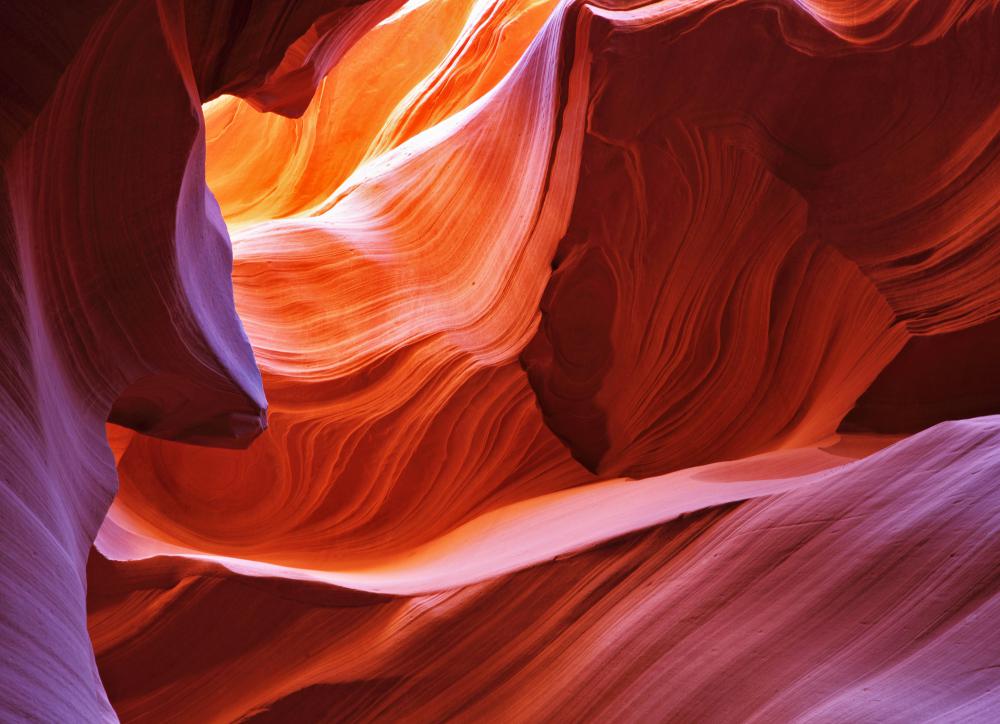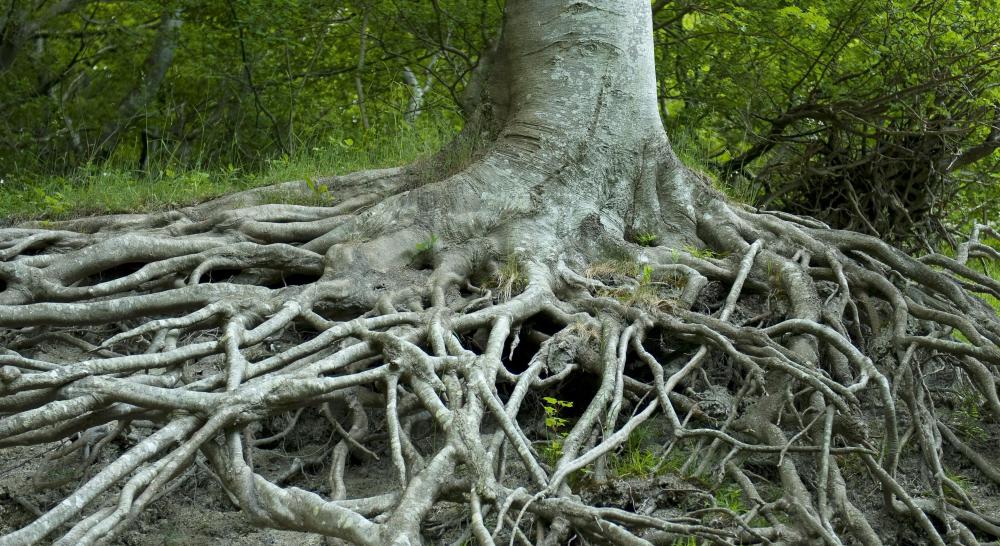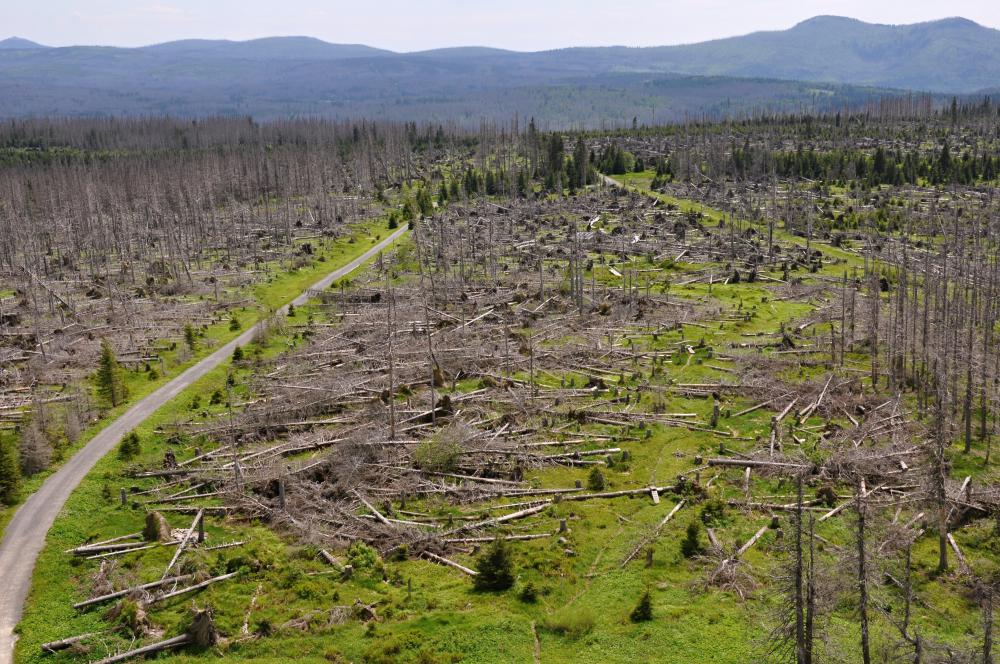At AllThingsNature, we're committed to delivering accurate, trustworthy information. Our expert-authored content is rigorously fact-checked and sourced from credible authorities. Discover how we uphold the highest standards in providing you with reliable knowledge.
What Causes Erosion?
Erosion is a continual process, and it can be caused naturally or through artificial means. While many people associate erosion with negative things like land slides and poor soil conditions, it is an important part of the geologic processes which make the Earth what it is. As soil and rock are slowly worn down, they cycle through the Earth's crust and the general environment, causing a constantly shifting and varied surface.
One of the most powerful causes of erosion is water. Water is sometimes called the universal solvent, because it is so effective at dissolving and changing things. Rain and runoff contribute to erosion, as do glaciers, snow, and ice. Ice can be particularly insidious, because it will literally rip rock and soil apart as it expands and contracts. Many seashores distribute spectacular examples of water erosion, in the form of huge terraces of rocks slowly worn away by the ocean.

Tectonic movement can also contribute to erosion, as can the wind. Wind transports materials from one place to another, and in extremely windy locations it can contribute a powerful scouring force to the process of erosion. Materials also naturally tend to slide down a slope, in a process called mass wasting. This downward pull is what causes mountains to slowly melt into hills and plains, and it is constantly happening, although not always in the spectacular form of a landslide.

Humans can also bring about erosion, usually through poor land management. Overgrazing, for example, is a serious cause of erosion. Cows in particular are known for causing serious problems, especially along river banks. Areas which have been heavily grazed for centuries show clear signs of erosion and soil exhaustion due to the demands made on the soil. Deforestation can also cause erosion, since it strips the protective surface plants and trees from the soil. The soil is no longer held in by roots and plant matter, so it slides away in rainy periods.

Once of the most famous instances of erosion is the Dust Bowl. The Dust Bowl was caused partially through human means, like farming the soil to exhaustion, and also through weather patterns. The end result, however, was a loss of an extremely valuable layer of top soil in many parts of North America. Modern farming techniques are remarkably similar to the techniques which increased the severity of the Dust Bowl in the 1930s, and this is an issue of some concern to environmentalists.
Frequently Asked Questions
What are the primary natural forces that cause erosion?

Erosion is primarily caused by water, wind, ice, and gravity. Water, especially from rainfall and river flow, is the most potent erosive force, carving out landscapes and transporting sediment. Wind can strip away fine soil particles, particularly in arid regions. Ice, through glaciers, can grind down rock surfaces, while gravity causes rock and soil to move downhill.
How does human activity contribute to erosion?

Human activities such as deforestation, overgrazing, and poor land management practices significantly accelerate erosion. Removing vegetation exposes soil to the erosive forces of wind and water. Agriculture, construction, and mining disturb the land's surface, making it more susceptible to erosion. According to the United Nations, up to 80% of the world's agricultural land suffers from moderate to severe erosion.
Can plants and vegetation prevent erosion? If so, how?

Yes, plants and vegetation are crucial in preventing erosion. Their roots bind the soil together, making it more resistant to the erosive forces of wind and water. Vegetation also slows down water runoff, reducing its potential to carry away soil particles. Ground cover, such as grasses, can protect the soil surface from the direct impact of raindrops, which can dislodge soil particles.
What role do rivers and streams play in erosion?

Rivers and streams are active agents of erosion. They have the power to cut through rock and soil, creating valleys and canyons over time. The force of moving water erodes riverbanks and beds, transporting sediment downstream. This process is natural but can be exacerbated by human activities that increase water flow or disturb the land.
How does erosion affect the environment and human society?
Erosion can lead to loss of fertile topsoil, reduced agricultural productivity, and the siltation of waterways, which affects aquatic ecosystems. It can also cause landslides and flooding, posing risks to human life and infrastructure. The economic impact is significant, with the cost of soil erosion worldwide estimated at billions of dollars annually.
What measures can be taken to reduce or prevent erosion?
To reduce or prevent erosion, it's essential to implement land management practices such as terracing, contour plowing, and maintaining vegetation cover. Constructing barriers like silt fences and retaining walls can also help. Restoring natural vegetation, especially along waterways, and reducing surface runoff through rainwater harvesting and proper drainage systems are effective strategies for combating erosion.
AS FEATURED ON:
AS FEATURED ON:

















Discussion Comments
Hmm. What about glaciers? Can they erode?
This is in my own words. The process of wearing away soil and rocks and carrying pieces away is called erosion. Erosion can be caused by wind, gravity, water etc. Humans can also cause erosion usually through poor land management.
I need to know what the causes of erosion are and a thorough description.
Water, wind, ice, gravity and temperature cause erosion.
I kind of need info about erosion. can you me give info? if you know anything about cause and effect, please post a comment if you know anything.
I would like to add, that while the author pointed out some of the specific causes of erosion, the process itself is part of the rock cycle. The rock cycle is also closely related to the hydrologic cycle and the tectonic cycle; at times completely overlapping. The cycle flows as follows:
1) Continental crust is weathered into regolith.
2) Erosion and deposition turns regolith into sediment.
3) Layers of sediment are turned into sedimentary rock through the process of cementation.
4) At this point, sedimentary rock can either be uplifted into continental crust, or undergo metamorphism to become metamorphic rock.
5) Metamorphic rock can either go through tectonic uplift, or melt into magma.
6) Magma either becomes plutonic or extrusive igneous rock.
7) Finally igneous rock either undergoes metamorphism or becomes continental crust.
As you can see erosion is an important part of this cycle; enabling the earth's crust to be constantly renewed.
The statement "Ice can be particularly insidious, because it will literally rip rock and soil apart as it expands and contracts", is actually an example of weathering. Erosion is the wearing away and transport of bedrock by a fluid, i.e. water, wind, etc. Weathering is the breakdown of rock by chemical or mechanical processes. They may sound like the same, but the differences are important for understanding how the rock cycle works. The key thing to remember is that transportation of materials is required for the process to be considered erosion.
For example, a sea cliff is eroded by waves that smash and transport the rock to the ocean floor. Weathering would be a tree causing a boulder to break by growing roots in fractures. In erosion the broken particles are transported to the lowest point in the landscape, and form horizontal sedimentary layers. When rock is weathered it has to wait for a fluid to complete the erosion process and transport the regolith to the lowest point.
Post your comments